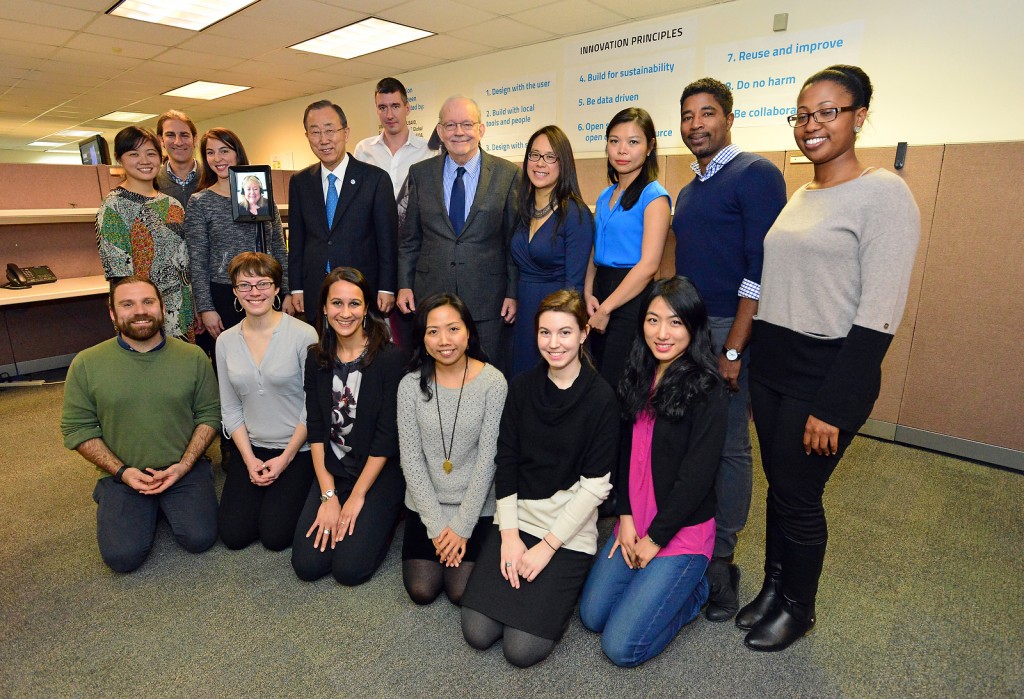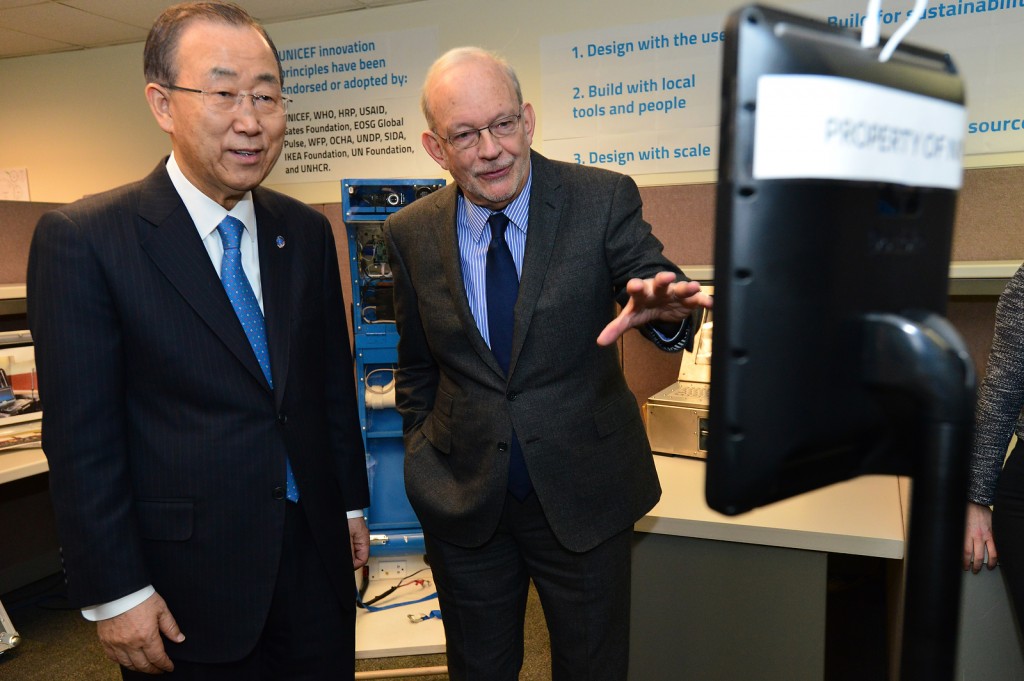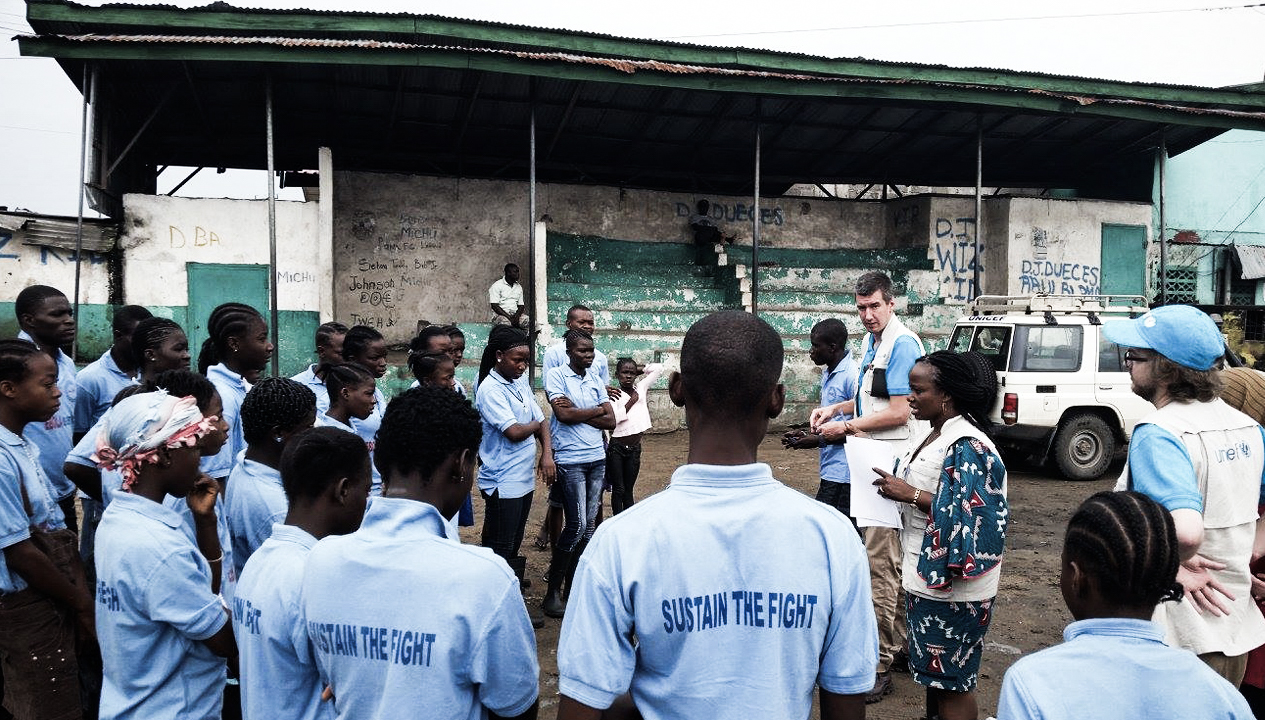In the following blog post, Mari Nakano (Grad Media Design ‘09) speaks on the impact of designers in social change based on her experiences as an Art Center student, Designmatters Fellow and Visual Design Lead for the UNICEF Innovation Unit.
Mari has been a designer for over 11 years and has worked with such notables as the United Nations Population Fund, ArtWorks Projects, Women Deliver, Pepsi Co. and Design Continuum. She was also a 2008 Designmatters Fellow and has continued to support Designmatters for the past 7 years. Currently Mari is the Visual Design Lead for the UNICEF Innovation Unit.

It all began in 2008. Oh, wait. Actually, it began before then, even before I entered design school. I didn’t start off as a designer. Before Art Center, I was a Youth Services Coordinator for underserved youth in Los Angeles, I was an Asian American Studies and Political Science major, an activist, a tutor, a recreational photographer. I thought I’d maybe turn into a social worker, an ethnic studies professor, a community organizer, perhaps some kind of civil rights attorney or maybe even a photojournalist or a combination of the sort. I was everywhere, but somehow hovering around something I couldn’t pinpoint just yet, at that time in my life.
I spent my twenties around youth – youth who often came to me expressing a desire to explore art, design and making. They wanted to know how to get a job, how to improve their graffiti names, how to take photos, how to just be better creators. From time to time, I was able to hook these youth up with artists, find a grant or two to fund a project, organize a few events – basketball tournaments, movie nights and such, but I was young and needed to figure out my own trajectory. The youth’s desires propelled my own and as much as I wanted to stay with them, figure them out, make sure they were safe and on pathways to success, I knew I needed to take a departure in order to become something more. I wasn’t enough of a person, I didn’t know enough to give more so I decided to go back to school, to art school.
Art and design were always an underlying part of me since I was very young and so was the idea of helping others. I’ve rarely ever been able to hold down a job that didn’t have true meaning. If I wasn’t spending my hours working towards some greater good, I writhed tortuously until I could find a way out of that job. I didn’t know what I’d find at Art Center, but I knew by being there, I was one step closer to connecting art and design to social good.
In 2008, I was appointed a Designmatters Fellowship with the United Nations Population Fund (UNFPA) in New York. Those three months of my life cracked open a slew of new opportunities for me, opportunities that made sense to my very being and which clicked-together design and social good. I’ve managed major exhibitions, been part of design-centered research explorations and tried to merge a lot of design-thinking methodologies into more traditional spaces. It hasn’t been smooth sailing – I’ve certainly struggled to find good work or fair work along the way – but a mix of patience, luck and gut has sort of popped me out of the rabbit hole into my current position as a Visual Design Lead for the UNICEF Innovation Unit.

The innovation team with UNICEF Executive Director Anthony Lake and United Nations Secretary-General Ban Ki-moon.
The Visual Strategy team is small and built to be nimble. Who we are is always a work-in-progress. While we can shoot out a nice slide deck or report layout, that is not our purpose. We essentially try and take complex and nuanced ideas and simplify them in ways that are quickly communicable. We also work with our core team members to help add value to our partnerships, our Innovation Labs, our innovation projects, data research and operations. Through visuals and systems thinking, we do things like describe how we managed to implement U-Report in Liberia in a matter of weeks during the peak of the Ebola outbreak. We build talent pools to maximize design and development resources for the Country Offices. We manage global branding of major projects and products and strategize how to create and maintain consistency amidst all the cultural nuances and special requests. We practice agility with our communication methods – one minute we need to create work that speaks to the Executive Director or even the UN Secretary General, the next minute we are preparing to display work for private funders. We toggle between the print and digital world and we also practice designing with constraint – If the internet is slow in a country, how do we still disseminate information that is accessible? If Adobe Creative Suite is not practical, then how can we maximize Microsoft Office? If Google isn’t accessible, then what’s the next best way to share working documents? How do we grow and progress without letting too little or too many choices slow us down? How do we continue to create strong design work under the pressure of time? And, most importantly, how do we maintain the essential drive to do what we do – to help those whose lives depend on what we do? The most important thing for me as a team lead is that everyone understands that the work they do is working towards the goal of a more equitable society for children and their families. If that is not the underlying drive under a designers work, I’ll be frank, I rather they not work here.
Socially conscious designers are necessary, not just for places like UNICEF, but for traditional practices and everyday spaces. In a world where we are dealing with inequity, environmental issues, hyper-production of wasteful and harmful things, we need designers who have a strong sense of compassion for people and nature, who know how to inject new ways of thinking into the world to effectively change it into a place that is less about consumerism and greed and more about sustainable opportunities and social equality. We have to know how to shift quickly between being a designer and an advocate. We have to know when visuals say it best or when words are better, when it’s fine to wear a T-shirt and when perhaps a blazer is more fitting.
Becoming a designer is a never-ending process. You’re always shifting in a way to grow with the world around you. Sure, we have to design for the world we have, but I think one of the best gifts of a designer is that they can design a better world. It’s a big job but not a job to take for granted. We’re part of a much larger operation and it’s our duty not just to insert ourselves into spaces that are already there or already being built, but to also invent and carve out new spaces to exist in order to strengthen the waves of social impact.

UNICEF Executive Director Anthony Lake and United Nations Secretary-General Ban Ki-moon visit our unit to learn more about what innovation is all about. Here, you see them interact with our telepresence robot on loan from NYU’s ITP program. © UNICEF
To learn more about UNICEF Innovation Team and their work please visit unicefstories.org

